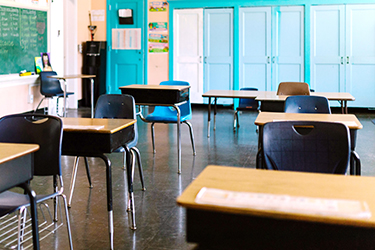Today’s kids are four times more likely than children a half century ago to be shot while at school, according to a recent study.
Released in March, the study in the Journal of the American College of Surgeons examines records on more than 2,000 school shootings, which injured more than 3,000 people.
During the 50-year study period, the rate of school shootings grew more than fourfold, from 0.49 per 1 million population to 2.21. Death rates rose more than sixfold, from 0.16 per 1 million population to 0.97.
In 1970, only 20 school shootings took place across the country. But in 2021 alone, there were 251 shootings, found the study, which used data from a compendium created by the Center for Homeland Defense and Security. The new research looked at all shootings that occurred at schools, not just mass incidents.
Louis Magnotti, MD, MS, FACS, study lead author and a trauma surgeon at the University of Arizona College of Medicine in Tucson, said he hopes the jarring statistics in the study will draw attention to the need to view gun violence as a public health crisis.
“These gun violence problems are like diseases that can be looked at like epidemics and approached that way,” Magnotti told The Nation’s Health. “This is just something that money and research and time needs to be dedicated to.”
Among states, California had the highest number of school shootings, at 214, followed by Texas, 176, and Florida, 120. The District of Columbia had the highest rate of school shootings, with 5.5 incidents per 100 schools. Delaware was a close second with 5.4 shootings, followed by Louisiana at 4.6.
The study also provided insight into the characteristics of perpetrators, finding that nearly two-thirds of shooters were under the age of 17 and over 80% used handguns. Ninety-six percent of the shooters were male. Shotguns were used in 4% of shootings and rifles in about 7%, with the latter weapon being the most deadly.
Study researchers called for work to define and monitor school shootings, implement interventions to prevent them, identify risk and protective factors, test the effectiveness of interventions, and ensure successful approaches are adopted.
In addition, parents should be educated on the importance of securing firearms at home to prevent children from accessing weapons, researchers said. About 4.6 million children in the U.S. live in homes with unlocked and loaded guns, according to the Brady Campaign to Prevent Gun Violence.
A free guide from the American College of Surgeons shares tips for firearm and ammunition storage, keeping children safe and disposing of unwanted firearms.
Photo by RDNE Stock project, courtesy Pexels